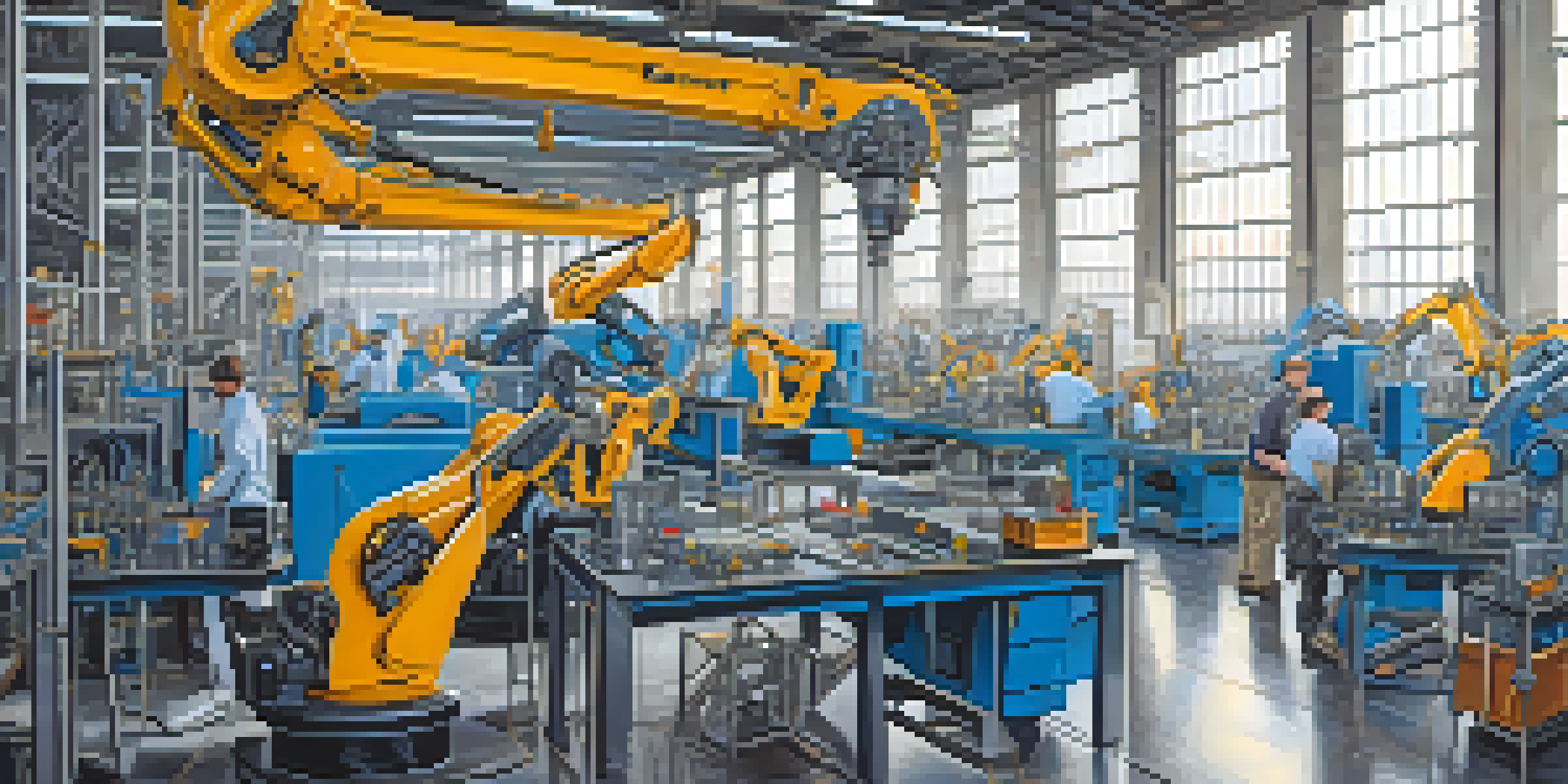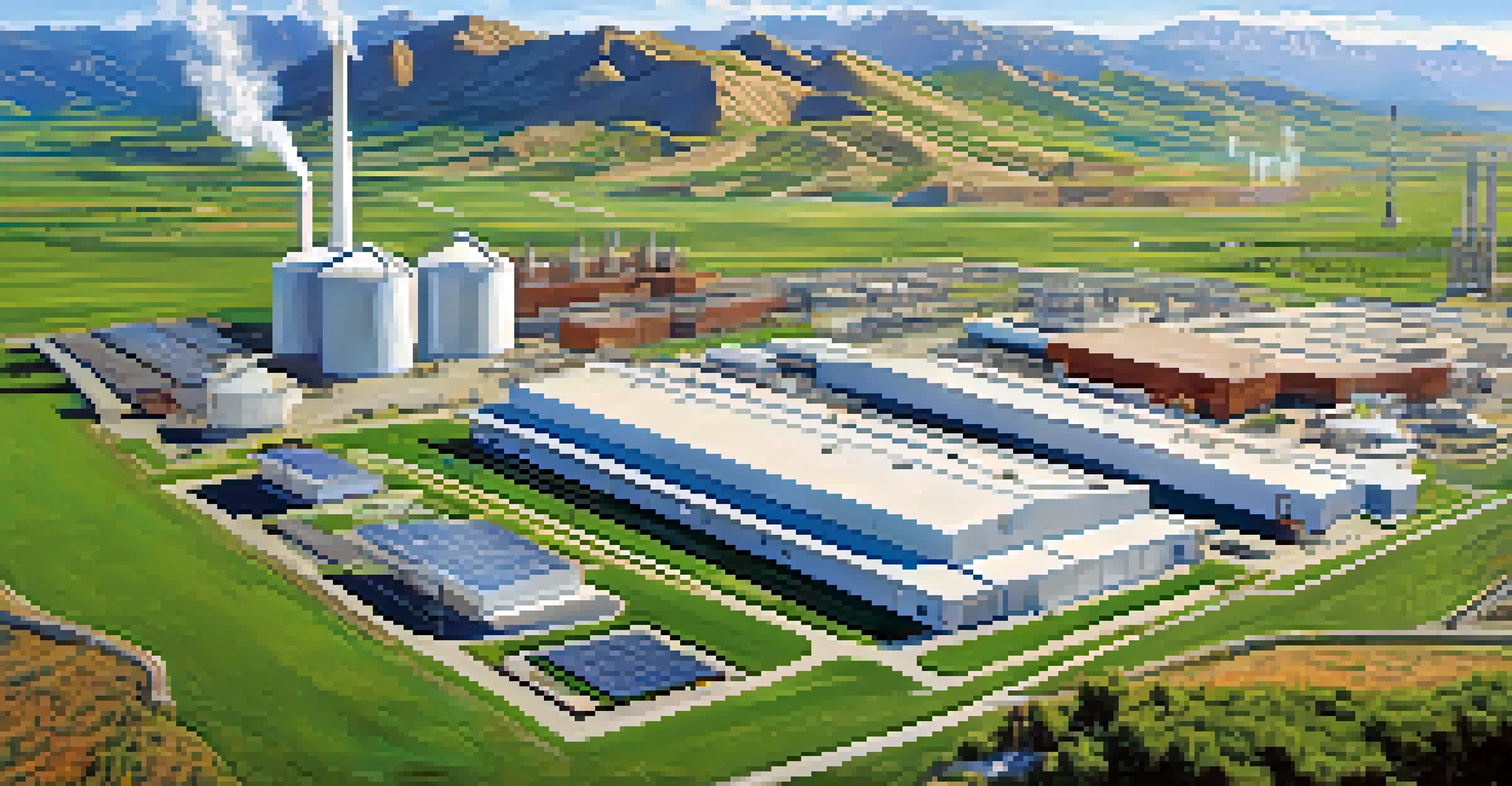Utah's Manufacturing Sector: Innovations and Growth Areas

Overview of Utah's Manufacturing Landscape
Utah's manufacturing sector plays a pivotal role in the state's economy, contributing significantly to job creation and GDP. With a diverse range of industries from aerospace to food production, it showcases a blend of tradition and modern innovation. The state has established itself as a hub for manufacturing, thanks to its strategic location and a skilled workforce.
The best way to predict the future is to create it.
In recent years, Utah has seen a surge in manufacturing growth, driven by a favorable business climate and supportive policies. This growth is not merely quantitative; it's also qualitative, with companies increasingly focusing on advanced technologies and sustainable practices. Utah manufacturers are well-positioned to meet the demands of a rapidly evolving marketplace.
As we delve deeper into the specific innovations and growth areas, it's clear that Utah's manufacturing sector is not just about producing goods; it's about creating value and driving economic resilience. The synergy between industry and innovation is shaping a promising future for the state.
Technological Advancements in Manufacturing
One of the standout features of Utah's manufacturing sector is its embrace of technological advancements. From automated machinery to smart manufacturing techniques, companies are leveraging technology to enhance productivity and efficiency. This shift not only reduces operational costs but also improves product quality, which is crucial in today's competitive market.

For example, the integration of artificial intelligence in production processes enables manufacturers to predict equipment failures before they occur, minimizing downtime. Additionally, the use of robotics in assembly lines allows for faster production rates and greater precision. This technological evolution is vital for maintaining Utah's competitive edge in the industry.
Tech Innovations Drive Growth
Utah's manufacturing sector is harnessing technological advancements to improve productivity, reduce costs, and enhance product quality.
Moreover, these advancements are creating new job opportunities that require a higher skill level, prompting a focus on workforce training and development. As Utah continues to innovate, the manufacturing workforce is evolving, ensuring that employees are equipped with the necessary skills to thrive in a technology-driven environment.
Sustainability Initiatives in Utah's Manufacturing
Sustainability is becoming a cornerstone of Utah's manufacturing sector, with companies increasingly adopting eco-friendly practices. This shift is not just a trend; it's a response to consumer demand for greener products and processes. Manufacturers are implementing strategies that reduce waste, conserve energy, and use sustainable materials.
Sustainability is no longer about doing less harm. It’s about doing more good.
For instance, some Utah companies are utilizing renewable energy sources, such as solar and wind, to power their operations. This not only lowers their carbon footprint but also reduces energy costs in the long run. Additionally, adopting circular economy principles, where waste is minimized and materials are reused, is becoming more common among manufacturers.
These sustainability initiatives not only benefit the environment but also enhance brand reputation and customer loyalty. As Utah's manufacturing sector continues to prioritize sustainability, it sets an example for others, showing that profitability and environmental responsibility can go hand in hand.
Key Growth Areas in Utah's Manufacturing Sector
Several key growth areas are emerging within Utah's manufacturing landscape, particularly in sectors like aerospace, biotech, and advanced materials. The aerospace industry, for example, is experiencing significant expansion, driven by both commercial and defense-related manufacturing. This growth is supported by the presence of major companies and a robust supply chain network.
Biotechnology is another promising area, with Utah's life sciences sector gaining traction due to innovative research and development. Companies are focusing on creating cutting-edge medical devices and pharmaceuticals, contributing to improved healthcare outcomes. This sector's growth is bolstered by partnerships between manufacturers and local universities.
Sustainability Takes Center Stage
Manufacturers in Utah are increasingly adopting eco-friendly practices in response to consumer demand and to enhance brand reputation.
Moreover, advanced materials manufacturing, including composites and nanomaterials, is on the rise. These materials are crucial for various applications, from automotive to aerospace, and Utah is positioning itself as a leader in this domain. By fostering innovation in these growth areas, Utah's manufacturing sector is poised for continued success.
Collaboration Between Industry and Academia
The collaboration between Utah's manufacturing industry and academic institutions is fostering a culture of innovation and skill development. Universities and colleges are increasingly partnering with manufacturers to create tailored programs that meet industry needs. This synergy ensures that students are equipped with relevant skills and knowledge upon graduation.
For example, programs focused on advanced manufacturing technologies and engineering are being developed to prepare the next generation of workers. These initiatives not only enhance the educational experience but also address the skills gap in the manufacturing sector. By aligning educational outcomes with industry demands, both parties benefit.
Furthermore, research partnerships are leading to groundbreaking innovations and product developments. Businesses gain access to cutting-edge research, while academic institutions benefit from real-world applications of their findings. This collaborative approach is essential for driving growth and maintaining competitiveness in Utah's manufacturing sector.
Challenges Facing Utah's Manufacturing Sector
Despite the positive trajectory, Utah's manufacturing sector faces several challenges that could impact its growth. One significant hurdle is the ongoing supply chain disruptions, which have been exacerbated by global events. Manufacturers must navigate these challenges to ensure timely production and delivery of goods.
Labor shortages are another pressing issue, as many companies struggle to find skilled workers to fill critical roles. As the demand for advanced manufacturing skills grows, it becomes increasingly important to attract and retain talent within the state. This challenge highlights the need for continued investment in workforce development and training programs.
Collaboration Fuels Skill Development
Partnerships between industry and academic institutions in Utah are bridging the skills gap and fostering innovation in the manufacturing workforce.
Additionally, manufacturers must adapt to ever-evolving regulatory requirements and market demands. Staying compliant while maintaining profitability can be a balancing act. However, by proactively addressing these challenges, Utah's manufacturing sector can continue to thrive and innovate.
Future Outlook for Utah's Manufacturing Sector
Looking ahead, the future of Utah's manufacturing sector appears bright, with numerous opportunities on the horizon. The ongoing focus on innovation, sustainability, and workforce development is setting the stage for continued growth. As manufacturers adopt new technologies and practices, they will enhance their competitiveness and resilience in the marketplace.
Moreover, as the global economy recovers and demand for goods increases, Utah's manufacturers are well-positioned to capitalize on emerging trends. Industries such as renewable energy, electric vehicles, and smart manufacturing are likely to see significant investments and growth in the coming years. This shift presents exciting possibilities for local manufacturers.

In conclusion, Utah's manufacturing sector is not just adapting; it is thriving. With a strong foundation built on collaboration, innovation, and sustainability, the state is poised to lead the way in the manufacturing landscape, ensuring a prosperous future for both businesses and communities.